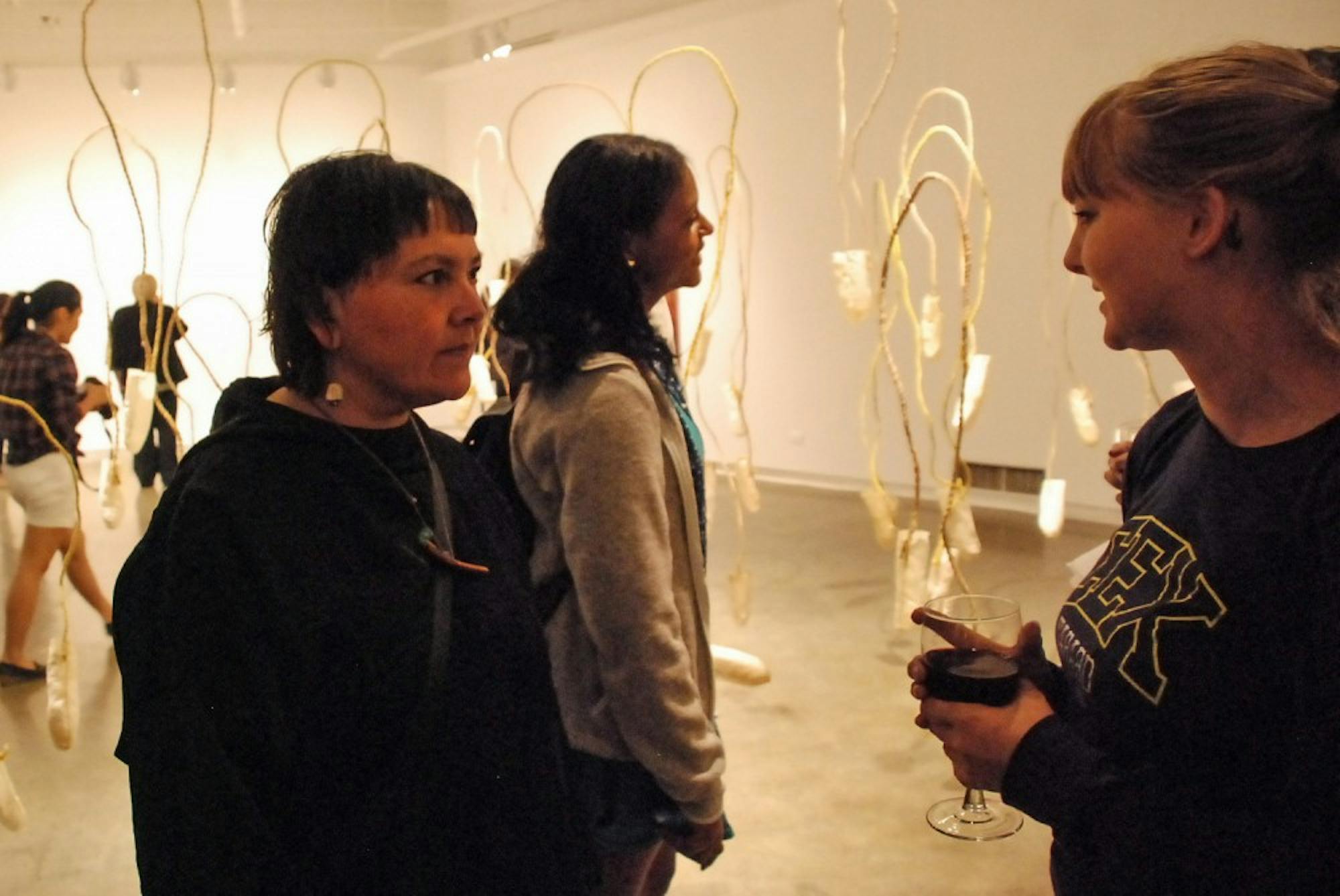As the lights of the Hood Museum auditorium slowly brightened, applause swelled through the intimate setting. A beam of light focused on one woman, dressed in all black, who stood at the front of the room.
Last week, artist-in-residence Sonya Kelliher-Combs spoke about how growing up in Alaska, discovering a passion for art in college and struggling with self identity have influenced her artwork.
Kelliher-Combs has integrated social and political topics, including issues pertinent to her Native identity like the high suicide rate of Native Alaskans or the psychological ramifications of sexual abuse, into her artwork.
“I think that these heavy issues are hard to talk about,” Kelliher-Combs said. “But at the same time, it’s really important to bring awareness to these social ills.”
Her exhibition in the Hopkins Center’s Jaffe-Friede Gallery features eight pieces that incorporate materials like skin, fur, hair, beads, wool, acrylic gel and wire. Kelliher-Combs chooses natural materials, combining them to emphasize a theme of temporality across her work.
Attended by studio art professors and students, last Tuesday’s event kicked off her monthlong residency and opened her Jaffe-Friede exhibition.
“The quality of her exhibition is very airy and ethereal,” studio art professor Sunny Young Park, who attended Kelliher-Combs’s Sept. 23 talk, said. “It’s not condensed with big objects or big panels of big volume. They’re delicate. Things are hanging on the walls and creating shadows.”
Kelliher-Combs described “Shedding Skin” as the piece she feels is most important to the exhibition. A one-of-a-kind installation that is site-specific to the Jaffe-Friede gallery, the piece includes more than 3,000 needles threaded with different colored threads.
The piece, she said, conveys the idea of the individual and the collective.
“What’s important to me is that I am a single person, but I’m a part of a community,” Kelliher-Combs said. “I’m a part of a group of people, but I’m also a part of the world population.”
Kelliher-Combs grew up in Nome, Alaska, where she learned skills like hunting, gathering, fishing and sewing. These activites inform her art’s materials and color — she said she finds inspiration in her background and personal experience.
Her work, she said, is an extension of who she is.
“I think that in an indigenous culture we’re creating traditions every day,” she said. “We’re a dynamic people and so the way I think about my art is that I am building upon the traditions of my people.”
Another work in the exhibition, “Secret Portraits,” is a collection of two-sided drawings on paper. Kelliher-Combs used an archival ink pen before dipping the finished product into beeswax. The artwork includes walrus stomach, reindeer rawhide, human hair, muskox wool and cotton string fashioned into individual vesicles that are aligned on a nylon thread.
“That piece reminded me how everyone holds things within themselves,” said Ashley Kekona ’18, who attended the lecture. “We need to realize that other people are like us too, and ‘Small Secrets’ reveals the integration between discovering one’s individuality and being a part of a community.”
Kelliher-Combs is working on new pieces for the Jaffe-Friede exhibition, which will run through Nov. 23.
“Her presence at Dartmouth adds to the diversity of different ways of thinking, living and making art,” studio art professor Brenda Garand said.




